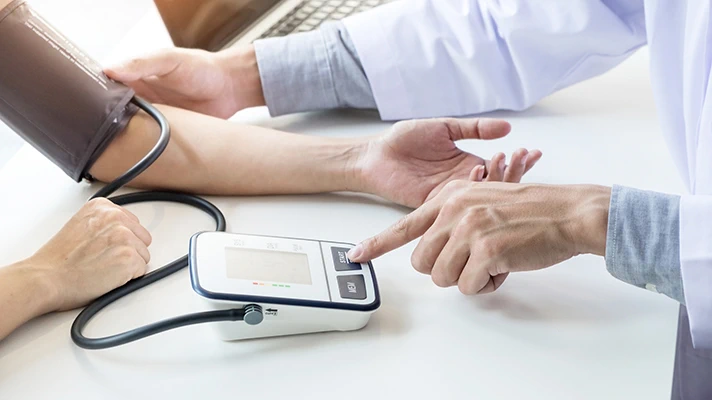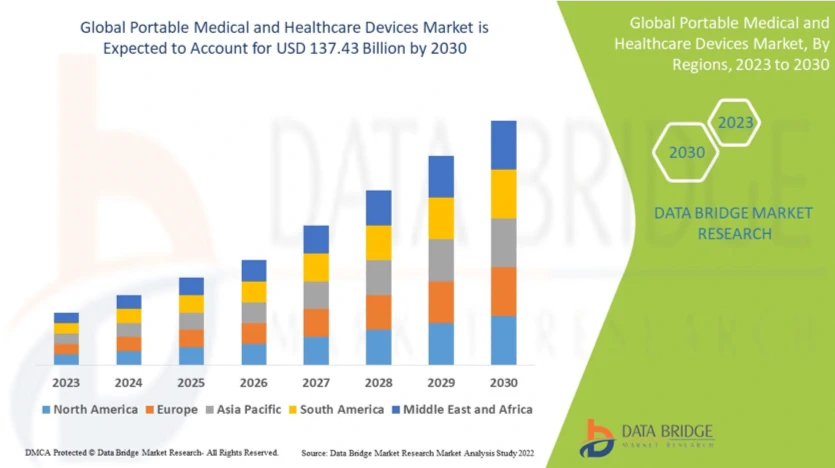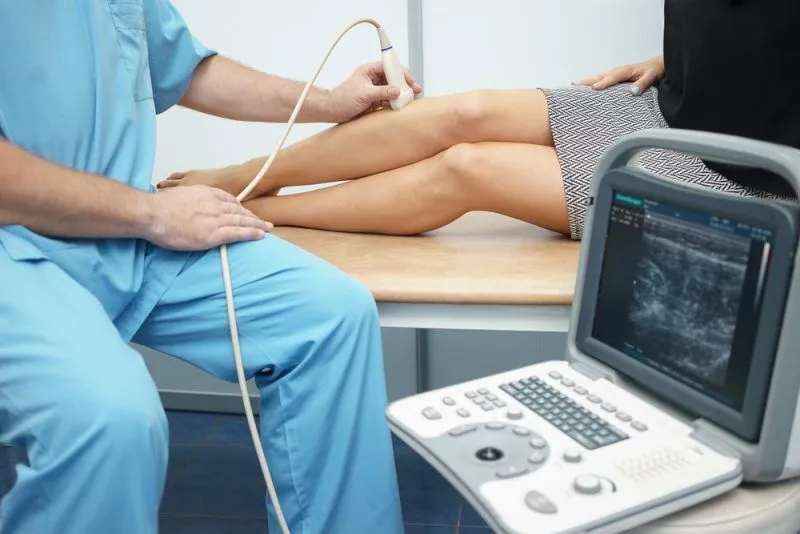Innovations in Portable Medical Devices: Market Growth & Analysis
Table of Contents
Adapting to the Future: The Surge in Home-Based Portable Medical Devices
The experience of confronting the COVID-19 virus has made people fully realize the importance of self-health management. As a result, the use of portable medical devices in home settings has surged. Thanks to these devices that offer remote monitoring, non-invasive, and even wearable capabilities, individuals can now obtain essential vital sign data at any time. This not only significantly reduces anxiety regarding their health but also minimizes their hospital visits.
The widespread adoption of portable medical devices can be attributed primarily to two factors. First, the enhancement brought about by new technology in these devices has significantly improved their practicality, accuracy, and accessibility. Second, according to the “World Population Prospects 2022” report released by the United Nations Department of Economic and Social Affairs, the global population of individuals aged 65 and above will be 771 million in 2022. This number is expected to rise to 994 million by 2030 and reach 1.6 billion by 2050. With the rapid increase in the global elderly population, the demand for health status monitoring has also become a major driver for the growth of the portable medical device market.
In practical applications, the function of portable medical devices isn’t just limited to testing and monitoring physiological parameters. Some devices are now equipped with recording and data analysis capabilities. For instance, electronic blood pressure monitors, after quickly completing a measurement, not only display the current measurement result to the user but can also store this data for long-term blood pressure tracking purposes. Current insulin meters are often equipped with communication ports (IR/wireless) that can transmit real-time measured data to PCs or insulin pumps, assisting in long-term treatment.
From an application standpoint, portable medical devices are generally battery-powered, compact, and easy-to-use handheld devices. However small they might appear, every portable medical device is a sophisticated electronic product. Consequently, engineers don’t find it easy to design these products, as there are many design nuances to consider.

Driving Forces Behind the Rapid Expansion of the Portable Medical Devices Market
In recent years, the use of portable medical devices (PMD) has become increasingly widespread. A combination of factors, including technological advancements, the pressure to reduce public health costs, and the desire to offer broader patient populations access to healthcare solutions, are driving the growth of the PMD market.
Research and Markets found that in 2022, the global revenue for the portable medical devices market will reach $57.3 billion. Between 2022 and 2027, the market is projected to grow at a robust compound annual growth rate (CAGR) of 9.2%. By 2027, the total market value of portable medical devices is expected to reach $96.93 billion. Segmented by product type, products used for diagnostic and monitoring purposes will contribute nearly 44% to the market by 2027 and are anticipated to dominate the portable medical devices sector. From 2022 to 2027, the CAGR for the portable medical devices market in the Asia-Pacific region is expected to be 10.4%.
An analysis by Data Bridge Market Research indicates that in 2022, the market for portable medical and healthcare devices stood at $64.58 billion. It is projected to reach $137.43 billion by 2030, with a CAGR of 9.9% from 2023 to 2030. Among the key factors propelling this growth is the increasing ubiquity of wearable devices and other portable technologies. Using these devices for remote patient health monitoring also has the potential to effectively reduce medical expenses.

Unpacking the Complexities of Portable Medical Devices: A Deep Dive
One of the challenges faced by portable medical devices today is that they need not only remote connectivity capabilities but also the maintenance of quality and responsiveness of all gathered data. Furthermore, portability is a significant consideration. The term “portable” in portable medical devices is primarily in contrast to the large-scale medical equipment used in hospitals, most of which are wheel-mounted and cumbersome to move. Today’s “portable” medical devices are not just transport-friendly; many are even “wearable.” These transformations pose multiple challenges for designers.
Upon “dissecting” portable medical devices, several functional blocks can be identified that are common across most portable consumer and home-use medical devices. These include: biometric sensors, amplification and analog-to-digital conversion of sensor input, battery and power management, low-power microcontrollers or digital signal processors (DSP), user interface or display, human-machine interface (HMI), and data interfaces (both wireless and wired).
Microcontrollers (MCU)/DSP:
Portable medical devices produce a considerable amount of raw data. The ability to store and process data, recognize changes, provide feedback, connect with large systems, and execute diagnostic algorithms are typically essential features of system microcontrollers. However, ultra-low power consumption and high performance often clash, making it vital to balance system processing needs with power constraints. Key design considerations for portable medical devices are low power consumption, primarily to prolong battery life. Other requirements include faster time-to-market, cost-efficiency, reliability, compact size, and higher integration.
Battery and Power Management:
For portable medical devices, simple systems with very low power consumption can use disposable batteries, while larger systems might need various sizes of rechargeable batteries and battery packs. When medical systems are needed, there often isn’t the luxury of time to wait for charging. Dynamic power path management and other features can charge the battery independently while powering the system, eliminating wait time for battery charging before operation. The lifespan of portable medical devices can range from a few days, months, or even several years.
With the maturation of lithium battery research and development technologies and the increasing mobility demands of portable medical devices, lithium batteries, boasting high voltage, high energy, and longevity, are gradually taking the lead in the medical device industry. These batteries enable medical devices such as defibrillators, monitoring instruments, ultrasound equipment, and infusion pumps to operate in locations distant from hospitals. It is precisely because of technologies like lithium batteries that 50-pound defibrillators can now be replaced with lighter, more compact devices.
Benefits of using lithium batteries in medical devices:
- Excellent Safety Performance: Lithium batteries for medical devices adopt an aluminum-plastic flexible packaging, different from the metal casing of liquid lithium batteries. In potentially unsafe scenarios, liquid batteries can explode, while medical device batteries at most might inflate.
- Slim Design: There’s a technical limitation for liquid lithium-ion batteries to be less than 3.6mm in thickness. However, medical device batteries face no such constraint even when they’re less than 1mm thick.
- Lightweight: Lithium batteries for medical devices weigh 40% less than steel-shelled batteries of equivalent capacity and 20% less than aluminum-shelled ones.
- Customizable Shapes: The shape of lithium batteries for medical devices can be altered based on customer needs. This flexibility allows for adjustments in battery thickness and form factor swiftly.
- High Capacity: The capacity of lithium batteries designed for medical devices is 10-15% higher than steel-cased batteries of the same size and 5-10% more than their aluminum-cased counterparts.
- Low Internal Resistance: Special designs can substantially reduce the impedance of the lithium battery, significantly enhancing its high-current discharge performance.
Data Interface:
Nowadays, the data interface for portable medical electronic devices has transitioned from wired RS232 connections to both wired and wireless Ethernet connections, short-range and long-range wireless connections. New interfaces enable the networking of all devices within a building, including devices within a patient’s home.
Display Technology:
Display modules often represent the first, second, or third most expensive items on the BOM list. Display choices in portable medical devices must also adhere to a low-power sleep mode. Most display drivers have ultra-low power modes and can reduce brightness through PWM backlight control or, in the case of OLED technology, by using the correct command or register settings. Touch Screen Control (TSC) is pivotal for the convenience of portable medical devices. It replaces traditional keyboards, significantly reducing the overall size of the device. TSC enables menu-driven function selection, fine-tuning of input/output data display, and magnification, significantly enhancing device usability. The electrostatic (ESD) handling capability of the chosen solution is an essential factor to consider when implementing TSC.
Sensor Interface and Signal Chain Technology:
The right signal chain is critical for temperature, pulse, glucose readings, and other biometric sensors. In most applications, designers strive to find microvolt-level signals amidst millivolt noise. Given the AC characteristics of the target signal, an amplifier that meshes well with a high-pass filtering scheme is necessary, coupled with a high-performance analog-to-digital converter.
Conclusion
The hallmark of portable medical devices lies in their low power consumption, reliability, and cost-effective sensor technology. These devices play a pivotal role in the early detection of various diseases, including diabetes and cardiovascular ailments. The utilization of such portable tools reduces the frequency of patients’ medical visits. Implementing portable medical devices in the healthcare industry streamlines and enhances patient care processes. They transport care from hospital settings or doctor’s offices directly to users’ homes, offering unparalleled convenience to patients.
Today, portable medical devices play a critical role in global health monitoring and management. An increasing number of these devices, powered by novel technologies such as cutting-edge wireless communication, are evolving into smarter, more intuitive, connected, and even wearable tools. These devices are actively engaged in monitoring and tracking individuals’ health, and some have even emerged as auxiliary diagnostic tools. Given these developments, the system design of portable medical devices must stay in sync with market trends. Considerations around power consumption, system performance, connectivity, cost, and size are paramount, setting a challenging path for designers.



